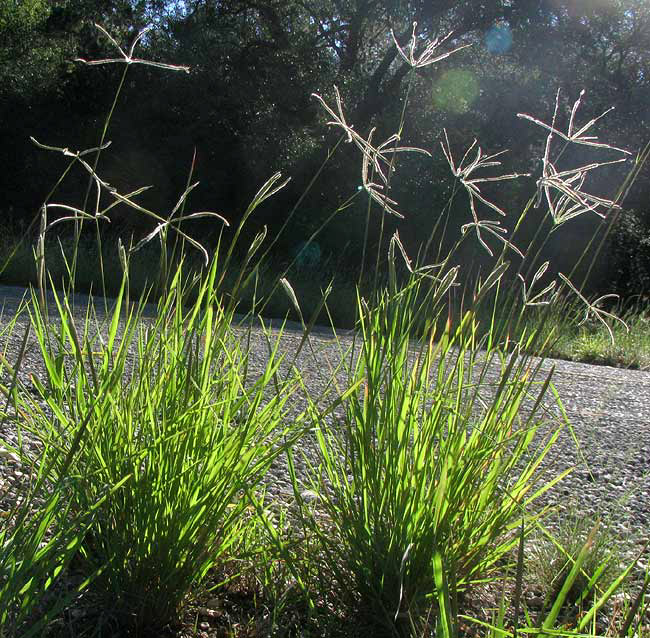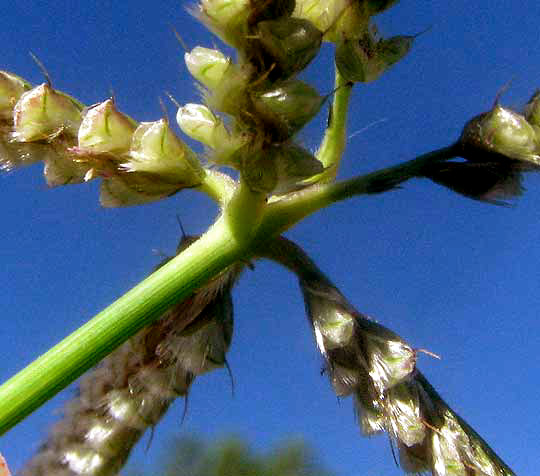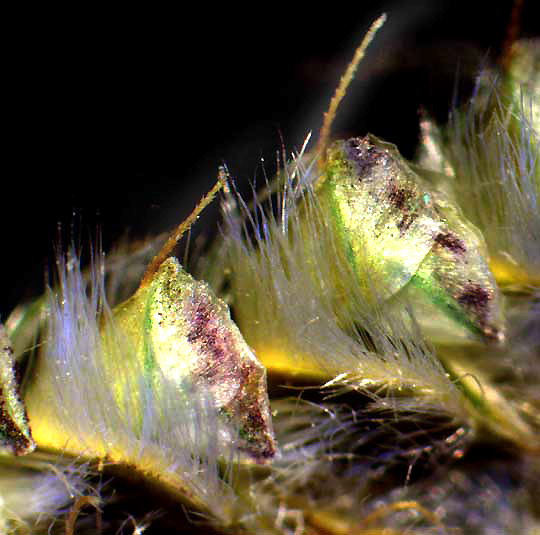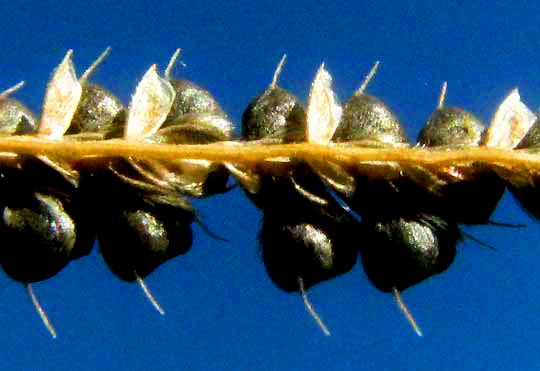Excerpts from Jim Conrad's
Naturalist Newsletter

from the November 3, 2013 Newsletter issued from the Frio Canyon Nature Education Center in the valley of the Dry Frio River in northern Uvalde County, southwestern Texas, on the southern border of the Edwards Plateau; elevation ~1750m (~5750 ft); N29.62°, W99.86°; USA
WINDMILL GRASS
Occasionally, even along weedy, mowed and sprayed roadsides, native grasses do turn up, such as the one shown back-lighted by early morning sunlight right next to the pavement at the top of this page.
The manner by which several slender spikes radiate from the tip of a long stem, or peduncle, reminds us of such common backyard weeds as Bermudagrass, Crabgrass and Goosegrass. The spikelets even grow only on the underside of each spike's ribbon-like rachis, same as with those grasses, as you can see below:

However, that picture also shows us that the individual spikelets look very different from the spikelets of those invasive backyard grasses. A close-up of two of this grass's spikelets appears below:

Each spikelet contains one fertile, grain-producing floret and one or more smaller, sterile florets above the fertile one. The above picture shows that the scales beneath each floret -- the "lemmas" -- bear hairy "cilia" along their margins. Mature grains -- caryopsis-type fruits -- are dark, shiny and about 1.3mm long (1/16th inch), and conspicuously emerge from the widely gaping glumes, as shown below:

This interesting grass is a member of the genus Chloris, whose species often are called windmill-grasses. It's CHLORIS CUCULLATA, in books known as Hooded Windmill-grass. It occurs in arid northern Mexico and extends into the US from southern Arizona to Texas and Oklahoma.
Windmill-grasses are found mostly in the world's tropics, especially in the Southern Hemisphere, though some species occasionally show up in the eastern US as invasives. In southwestern Texas we might possibly see nine or ten species. Our Hooded Windmill-grass differs from other species by its small number of flowering spikes and their shortness, by the small size of its flowers and grains, and, especially, by the shortness of the needle-like "awns" tipping the florets' lemmas. You might enjoy comparing our Chloris cucullata with the Chloris virgata we saw in the Yucatan at http://www.backyardnature.net/yucatan/chloris.htm.
Hooded Windmill-grass is regarded as providing fair grazing for wildlife and livestock, and of course small, seed-eating birds relish its easy-to-spot grains.